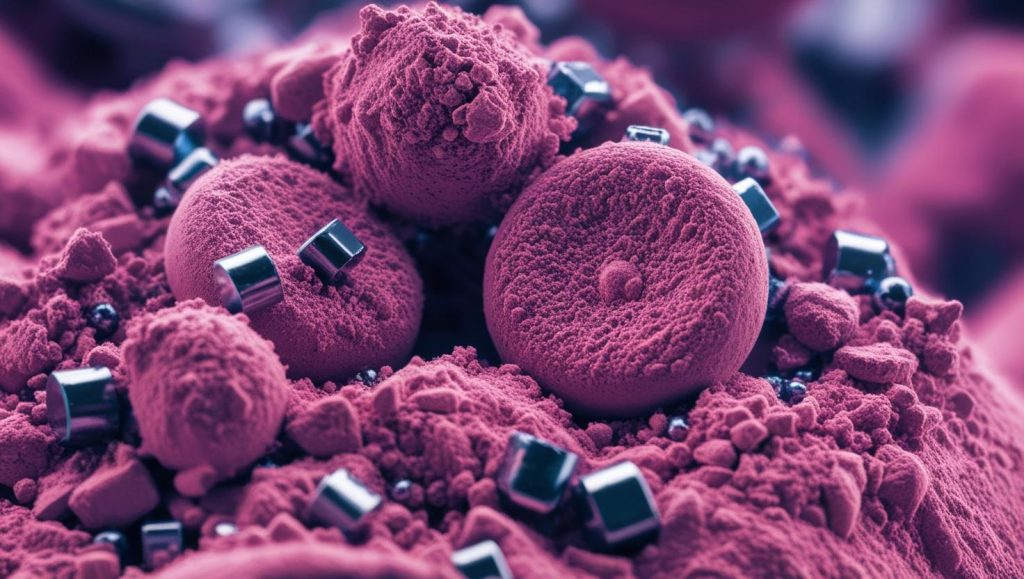Introduction to Powder Metallurgy Homework Help
Are you struggling with your powder metallurgy assignments? Our Powder Metallurgy homework help guide is here to simplify complex concepts, provide step-by-step explanations, and offer valuable external resources to help you excel in your coursework.
Powder metallurgy (PM) is an advanced manufacturing process used to create metal components from powdered materials. This method is widely used in the automotive, aerospace, and medical industries due to its efficiency, cost-effectiveness, and ability to produce complex geometries. Understanding the principles, processes, and applications of powder metallurgy is crucial for students studying materials science and engineering.

In this detailed guide, we will cover:
- What powder metallurgy is and why it is important.
- The key steps involved in the process.
- Types of powder metallurgy techniques.
- Advantages and limitations of powder metallurgy.
- Real-world applications and case studies.
- External resources for further learning.
By the end of this guide, you’ll have a thorough understanding of powder metallurgy and be well-equipped to tackle your homework efficiently.
What is Powder Metallurgy?
Powder metallurgy (PM) is a manufacturing technique used to produce metal components by compacting and sintering powdered materials. This method is commonly employed when traditional metalworking techniques, such as casting or machining, are not feasible.
Why is Powder Metallurgy Important?
- Reduces material wastage compared to conventional machining.
- Enables the production of complex and net-shape components.
- Allows for the manufacturing of materials with unique properties.
- Improves mechanical and thermal properties through precise control of microstructures.
For more details, visit this ASM International overview on powder metallurgy.
Key Steps in the Powder Metallurgy Process
1. Powder Production
The first step in PM is producing metal powders, which can be achieved through:
- Atomization: Molten metal is converted into fine particles using gas or water.
- Reduction: Metal oxides are reduced using hydrogen or carbon to obtain fine powders.
- Electrolysis: Metal powders are extracted from electrolyte solutions.
- Mechanical Comminution: Large metal pieces are crushed into fine powders.
2. Mixing and Blending
- Powders are mixed with lubricants, binders, and alloying elements to improve flowability and sintering.
- Homogeneous blending ensures uniformity in the final product.
3. Compaction (Pressing)
- The blended powder is pressed into a mold to form a “green compact.”
- Pressure ranges from 100 MPa to 1000 MPa, depending on the material.
4. Sintering
- The green compact is heated in a controlled atmosphere at temperatures between 70-90% of the melting point of the base metal.
- This process bonds particles together, increasing density and strength.
5. Secondary Operations
- Impregnation and Infiltration: Enhances strength and lubrication properties.
- Heat Treatment: Further enhances mechanical properties.
- Machining and Finishing: Ensures dimensional accuracy and surface finish.
For an in-depth explanation of the PM process, visit MPIF (Metal Powder Industries Federation).
Types of Powder Metallurgy Techniques
1. Conventional Powder Metallurgy
- Used for producing simple components like gears and bearings.
- Involves compaction and sintering without additional modifications.
2. Metal Injection Molding (MIM)
- Combines powder metallurgy with plastic injection molding.
- Ideal for producing complex, high-precision components.
3. Hot Isostatic Pressing (HIP)
- Uses high pressure and temperature to produce fully dense materials.
- Commonly used for aerospace and medical applications.
4. Additive Manufacturing (3D Printing with Metal Powders)
- Uses laser or electron beams to fuse metal powders layer by layer.
- Allows for rapid prototyping and customized components.
For a deeper look into PM techniques, check out this ScienceDirect article on advanced PM methods.
Advantages and Limitations of Powder Metallurgy
Advantages:
✅ Minimizes material waste (high material efficiency). ✅ Produces complex and near-net-shape parts. ✅ Allows for precise control over microstructures and compositions. ✅ Reduces machining costs compared to traditional methods.
Limitations:
❌ Limited material choices (some metals are difficult to process using PM). ❌ High initial tooling costs. ❌ Porosity can affect mechanical properties if not controlled properly.
To learn more about PM’s benefits, visit Matmatch’s guide on PM.
Real-World Applications of Powder Metallurgy
🔹 Automotive Industry: Used in gears, bushings, and engine components. 🔹 Aerospace Industry: Lightweight, high-strength PM parts improve fuel efficiency. 🔹 Medical Sector: Metal injection molding (MIM) produces surgical tools and implants. 🔹 Electronics: Powder metallurgy is used in electrical contacts and magnets.
To explore industrial case studies, visit PM Review Magazine.
Resources for Further Learning
- Books on Powder Metallurgy:
- “Powder Metallurgy Science” by Randall M. German.
- “Introduction to Powder Metallurgy” by A. K. Sinha.
- Online Courses:
- Professional Organizations:
Conclusion: Get the Best Powder Metallurgy Homework Help
Powder metallurgy is a crucial field in materials science and engineering, offering cost-effective and innovative solutions for manufacturing metal components. This guide has provided a detailed overview of Powder Metallurgy homework help, covering fundamental concepts, processes, techniques, advantages, and real-world applications.
If you need further assistance, check out the external resources mentioned above. Mastering powder metallurgy will not only help you succeed in your coursework but also prepare you for a career in advanced manufacturing and materials engineering.


